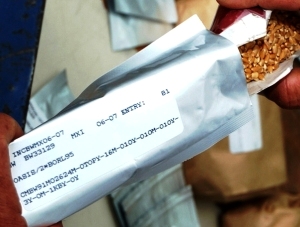Registration of maize genetic resources
Contributors to this page: CIMMYT, Mexico (Suketoshi Taba, Bonnie J. Furman), with inputs also received from IITA, Nigeria (Dominique Dumet); EMBRAPA (maize and sorghum genebank), Brazil (Flavia Teixeira); USDA (ARS/NC7, ISU), USA (Mark Millard).
Rationale for registration
As the entries of a genebank increase, the issue of several possible duplicates emerges and this greatly affects the cost of their efficient and effective conservation. Therefore proper registration is an essential step in the effectual management of the collection.
Verifying accompanying documentation
A minimal documentation is essential to track germplasm material. Health and IPR certificates are very important for entry into the country. The following documents should accompany each consignment of plant germplasm:
- Import permit.
- Phytosanitary certificate.
- Passport data.
- Characterization data (if available).
Verifying the consignment
Each new sample is assessed before registration within the collection. Assessment is necessary to verify the legitimacy of the material, to avoid the introduction of new pests and diseases and the storing of dead material, and also to assure that only seeds in good condition and a high probability of viability should be registered. The first step is very important to avoid duplicates, as well as to have complete information on genebank accessions. These data enhance the value of the germplasm collection.

Documenting information of maize accessions at the USDA genebank (photo: L. Guarino, by kind permission of USDA genebank in Ames, Iowa, USA) |
Checking for duplicates
- The first criterion to introduce new materials in the genebank should be to check if the same materials are already present.
- Passport data, phenotypic descriptors and characterization data must be used to determine if the accession is unique or a duplicate.
Content verification
- Check all packages against the list provided with the samples.
- If a list is not provided or seeds do not correspond with the list, prepare a list and return to donor/provider for confirmation and to obtain the proper data.
Handling incoming germplasm
- All incoming germplasm needs to be cleared through quarantine regulation of an accredited seed health laboratory. The quarantine regulators can also view new accessions in the introduction nursery.
- All incoming germplasm into the genebank should receive clearance by seed health laboratories, including the presence of any GMO.
- New introductions should be planted in the observation or introduction nursery to determine if regeneration will be possible, as well as to verify descriptors given in the passport data.
- New introductions need to be increased or regenerated after clearance through the host country quarantine as the amount of seed is often too little for distribution.
- The curator should plant new introductions in the multiplication or regeneration nursery and obtain characterization data (see sections on germplasm regeneration and characterization).
- The regenerated seeds of new introductions should go through seed cleaning, seed drying, identification of the genetic purity, initial seed viability testing and seed health clearance before registration in active and base collections (see section on sample processing).
Assigning accession identification numbers
- As soon as it is received, the newly introduced germplasm in the genebank should be registered in the genebank database and assigned an introduction (temporary) identification (ID) number.
- A final (permanent) accession number should be given to the material that can be preserved and distributed after the quarantine, and where initial seed increase has provided enough material for distribution
 Label foil bags with information about the seeds |
Recording information during registration
The following information should additionally be recorded for each new accession:
- Seed origin (location, year, season, plot number).
- Collection name, pedigree, race class
- Storage location (row, column, level, box, sample).
- Nomenclature by genus, species (taxonomic nomenclature).
- Adaptation zone (tropical, subtropical, highland, temperate).
References and further reading
Chang TT. 1985. Preservation of crop germplasm. Iowa State Journal of Research. Vol. 59. No.4. pp. 365-378.
FAO/IPGRI. 1994. Genebank standards. Food and Agriculture Organization of the United Nations, Rome and International Plant Genetic Resources Institute, Rome. Available in English, Spanish, French and Arabic.
Hanson J. 1985. Procedures for handling seeds in genebanks. Practical manuals for genebanks no. 1. International Board for Plant Genetic Resources, Rome. HTML version available from: http://www2.bioversityinternational.org/publications/Web_version/188/.
Justice OL, Bass LN. 1978. Principles and practices of seed storage. Agriculture handbook no. 506. U.S. Government Printing Office, Washington D.C.
Mezzalama M, Gilchrist L, McNab A. 2005. Seed Health: Rules and regulations for the safe movement of germplasm. Mexico. D.F., CIMMYT. Available from: http://libcatalog.cimmyt.org/download/cim/93586.pdf. Date accessed: 3 September 2010.
Taba S, Ginkel M, Hoisington D, Poland D. 2004. Operations manual. Wellhausen-Anderson Plant Genetic Resources Center: 2004. El Batan, Mexico:CIMMYT. Available here.
Warham EJ, Butler LD, Sutton BC. 1996. Seed testing of maize and wheat: A laboratory guide. CIMMYT, Mexico and CAB International, UK.
Comments
- No comments found





Leave your comments
Post comment as a guest